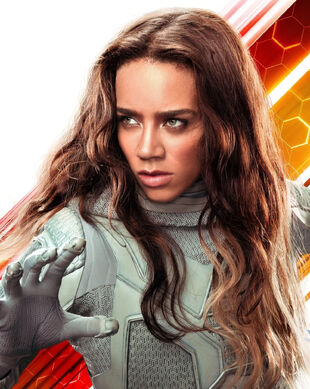In 2016, Marvel Studios announced the title of the sequel to Ant-Man: Ant-Man & The Wasp. Released in 2018, this was the first movie in the Marvel Cinematic Universe to feature a female superheroes’ name in the title, so it was an incredibly important step towards greater equality for women in the MCU.


Movie Poster Controversy
The movie posters were subject to some controversy due to the way Ant-Man and the Wasp were positioned. Evangeline Lilly (who plays the Wasp) is facing forward, while Paul Rudd (Ant-Man) is looking back over his shoulder, a pose typically reserved for women on posters. One tweet from an angry fan sums up the strange, sexist outlook that the opponents of this poster had:
This is the future the liberals are planning for you. Women are men and men are women. #AntManAndTheWasp – @michaelshipley
Another poster (pictured below) featured Wasp in a prominent position at the center, which was another “win for gender parity,” as Scott Mendelson of Forbes Magazine wrote.

Female Competence
Throughout Ant-Man and the Wasp, the female characters consistently prove themselves to be more competent and often more powerful than their male counterparts. Hope van Dyne (Wasp) was introduced in Ant-Man, but got little chance to show her true worth or the extent of her abilities. In Ant-Man and the Wasp, however, Hope was “the brains of the operation,” in contrast to Ant-Man’s “comic relief.” Alongside her father, Hank Pym, she works to solve complex scientific problems involving the quantum realm and is never portrayed as less intelligent or inferior to Pym, despite his greater age and experience. Not only is Hope much more intellectually competent than Scott Lang (Ant-Man), she is his physical superior as well, demonstrating acrobatic and shape-shifting skills that put Ant-Man’s to shame. As one critic wrote, “this woman kicks so much ass, it’s almost infuriating that she wasn’t recruited to the Avengers before the Infinity War went down – she could have given Thanos and his minions some serious trouble.” Although Ant-Man is still the focus of the majority of the film, his role is somewhat passive. One of Scott’s greatest roles in this film that allows them to (spoiler alert) rescue Hope’s mother, Janet van Dyne, from the quantum realm is as a conduit that Janet is able to relay information through. Scott hears her voice in his head and in some scenes, is fully controlled by Janet’s mind. This leaves Hope to save the day and rescue her mother. She “gets Scott out of binds, risks her life to save him, and generally drives the entire plot of the film,” showing her incredible capabilities every step of the way.
Janet van Dyne is another example of a competent woman in Ant-Man and the Wasp. Although she was trapped in the dangerous quantum realm for many years, she was able to stay alive and even find a way to contact her family, a feat that her husband never thought would be possible.

Ghost
One of the most interesting ways to write a villain is by giving them a valid justification for the things that they are doing. A villain with an unrelatable motivation makes the fight between good and evil seem simplistic and loses all sense of nuance. Ant-Man and the Wasp features a female antagonist, which is not very common in the action movie genre. Ghost is one of my favorite villains simply because I can genuinely understand where she’s coming from and why she committed the crimes that she did. Ghost lives with an incredibly painful condition where she phases through objects uncontrollably. Her fight against the heroes is solely motivated by her intense desire to cure her condition, which was caused by a terrible accident that killed both her parents. This sympathetic backstory and motivation allow her to connect with the audience and the protagonists, which is unique to many antagonists.






:no_upscale()/cdn.vox-cdn.com/uploads/chorus_asset/file/8597233/MV5BMTgzNjQ1ODk1Nl5BMl5BanBnXkFtZTgwNjEyOTYzMjI_._V1_SY1000_CR0_0_1502_1000_AL_.jpg)

